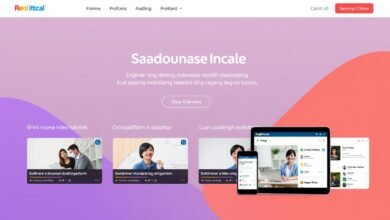Evaluating Student Perceptions of Online Learning: The Effectiveness of E-Learning During the Pandemic

The COVID-19 pandemic triggered an unprecedented global shift to online learning, transforming education virtually overnight. As institutions worldwide transitioned from traditional classrooms to digital platforms, a critical question emerged: How effective is e-learning during a pandemic? This article examines student perceptions of online learning effectiveness, analyzing research findings to understand what worked, what didn’t, and what lessons we can carry forward into post-pandemic education models.
The Sudden Transition to E-Learning During the Pandemic
When COVID-19 forced educational institutions to close their physical doors in early 2020, the shift to online learning was abrupt and often chaotic. Universities and schools worldwide implemented emergency remote teaching, with many educators and students navigating unfamiliar digital territory with minimal preparation.
Students adapting to remote learning environments during the pandemic
This transition wasn’t merely a change in delivery method—it represented a fundamental shift in how education was conceptualized, delivered, and experienced. According to research published in BMC Medical Education, both students and faculty faced significant challenges adapting to this new reality, with varying levels of preparedness and technological access influencing the effectiveness of online learning initiatives.
Research Methodology: Evaluating E-Learning Effectiveness
To comprehensively assess the effectiveness of e-learning during the pandemic, researchers employed various methodological approaches. This article synthesizes findings from multiple studies that utilized surveys, interviews, and comparative analyses to gather student perspectives on online learning experiences.
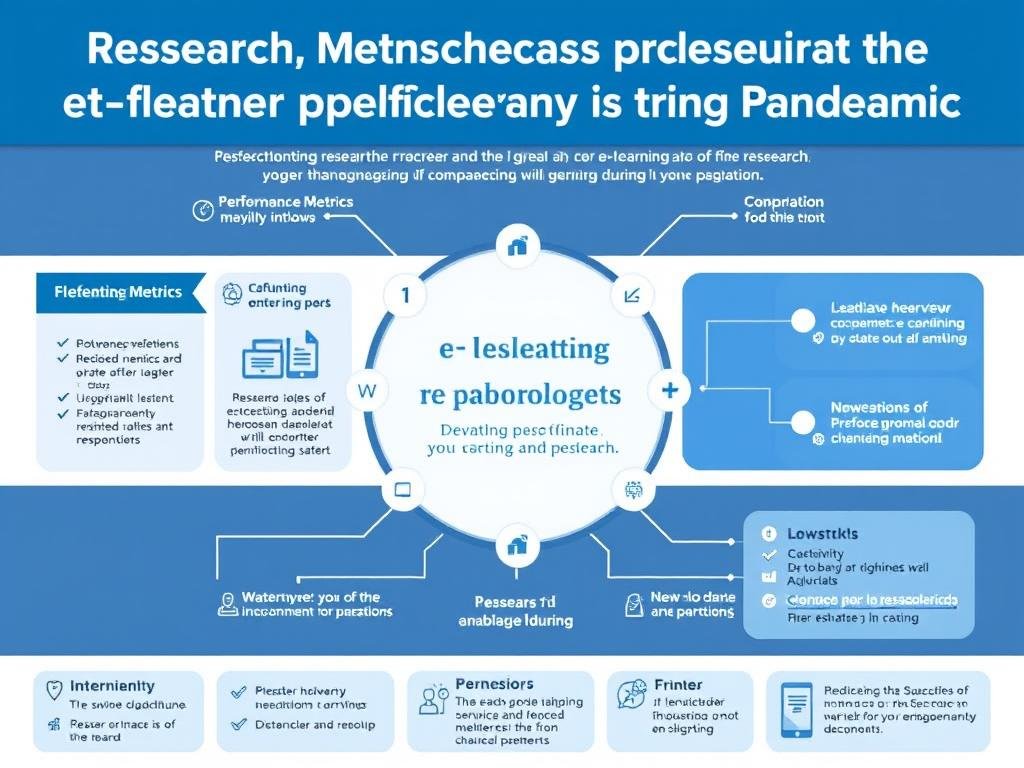
Common research methodologies used to evaluate online learning effectiveness
Key studies examined in this analysis include cross-sectional surveys across multiple institutions, longitudinal studies tracking changes in student perceptions over time, and comparative analyses between pre-pandemic and pandemic learning outcomes. The research focused primarily on higher education contexts, with sample sizes ranging from several hundred to several thousand participants across diverse geographic and disciplinary backgrounds.
Key Findings: Student Perceptions of E-Learning Effectiveness
Quantitative Metrics of Effectiveness
Research findings reveal mixed results regarding the quantitative effectiveness of online learning during the pandemic. Studies examining academic performance metrics show considerable variation:
| Effectiveness Metric | Research Findings | Contextual Factors |
| Student Satisfaction | Approximately 60-70% satisfaction rates across studies | Higher in institutions with established e-learning infrastructure |
| Academic Performance | Mixed results; some studies show comparable or slightly improved outcomes | Discipline-dependent; better in theoretical vs. practical subjects |
| Engagement Levels | Decreased by 20-30% compared to in-person learning | Improved with interactive teaching methods and regular feedback |
| Knowledge Retention | Comparable to traditional learning in 65% of studies | Enhanced by multimedia content and self-paced learning options |
| Skill Development | Declined in practical skills; improved in digital competencies | Significant variations based on subject area and available resources |
Qualitative Student Feedback
Beyond quantitative metrics, qualitative feedback from students provides valuable insights into the perceived effectiveness of online learning during the pandemic:
“The flexibility of online learning allowed me to balance my studies with family responsibilities during the pandemic. However, I missed the spontaneous discussions and hands-on activities that made learning come alive in the classroom.”

Student testimonials reflecting diverse experiences with online learning
Common themes in student feedback included appreciation for flexibility and accessibility, concerns about reduced interaction with peers and instructors, and mixed experiences with technology platforms. Many students reported developing greater self-discipline and time management skills, while simultaneously expressing concerns about decreased motivation and engagement in the online environment.
Challenges Affecting E-Learning Effectiveness
Research identified several key challenges that impacted the effectiveness of online learning during the pandemic:
Technical Challenges
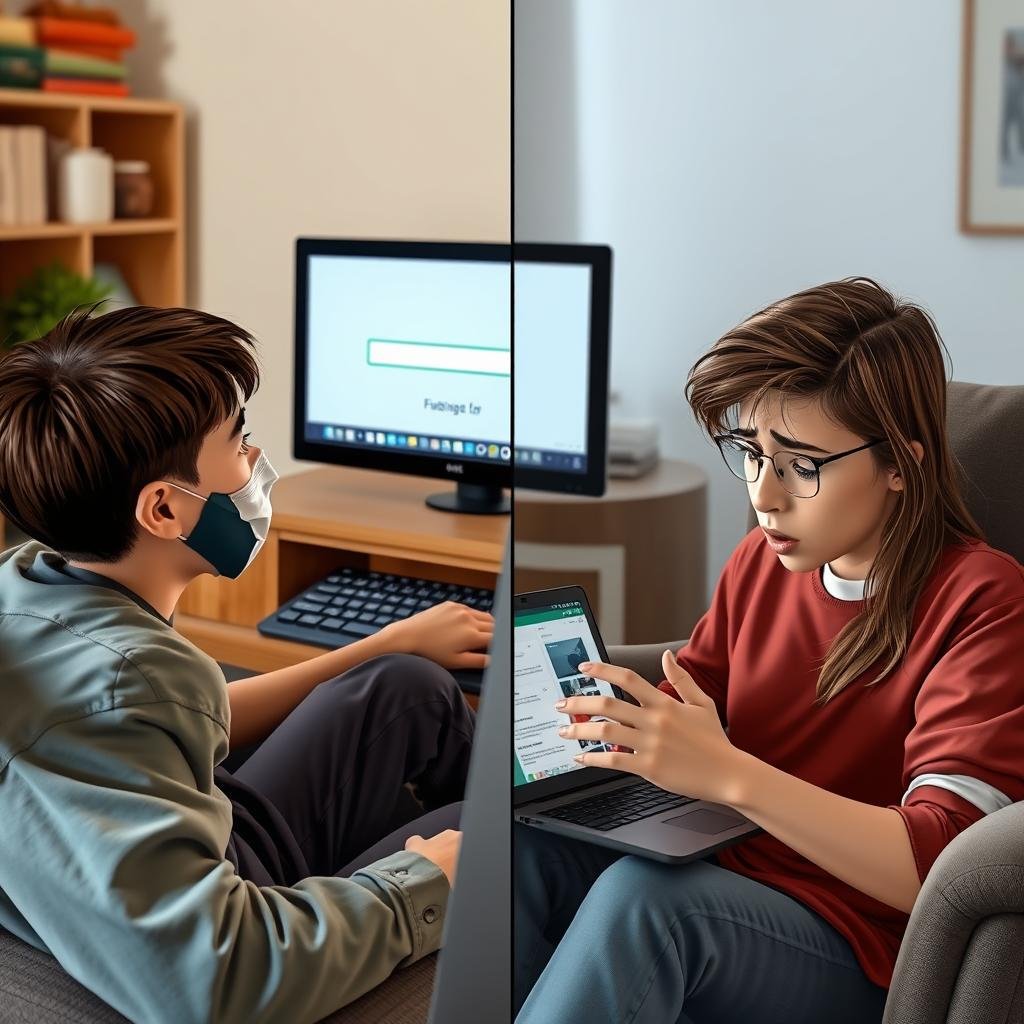
- Inadequate internet connectivity (reported by 77% of students in one major study)
- Limited access to necessary hardware and devices
- Platform instability and technical glitches
- Digital literacy gaps among both students and faculty
- Incompatibility issues between different systems and software
Pedagogical Challenges

- Insufficient interaction between learners and instructors (45% of students)
- Lack of timely feedback and answers to questions (10%)
- Poorly prepared course materials (6%)
- Difficulties in conducting practical and laboratory sessions
- Assessment integrity concerns and examination fairness
Psychological and Social Challenges
The pandemic context introduced unique psychological and social factors that influenced e-learning effectiveness:

Psychological impacts of isolation and pandemic stress on learning effectiveness
Psychological Factors
- Pandemic-related anxiety and stress
- Isolation and loneliness
- Motivation and focus difficulties
- Screen fatigue and digital burnout
- Blurred boundaries between academic and personal life
Social Factors
- Loss of peer learning opportunities
- Reduced sense of academic community
- Limited informal learning interactions
- Challenges in group work coordination
- Disparities in home learning environments
Infrastructure and Access Disparities
Research highlighted significant disparities in e-learning effectiveness based on infrastructure and access factors:
Studies from developing countries reported significantly greater challenges with online learning effectiveness. In Pakistan, for example, research by Adnan and Anwar (2020) found that limited internet access due to technical and financial constraints severely hindered e-learning effectiveness for many students.
These infrastructure disparities created what researchers termed a “digital divide” in educational access and outcomes, with socioeconomic factors significantly influencing the effectiveness of online learning during the pandemic. Students from lower-income backgrounds, rural areas, and developing regions faced disproportionate challenges in accessing and benefiting from e-learning opportunities.
Benefits and Advantages of E-Learning During the Pandemic
Despite the challenges, research also identified significant benefits and advantages of e-learning during the pandemic period:
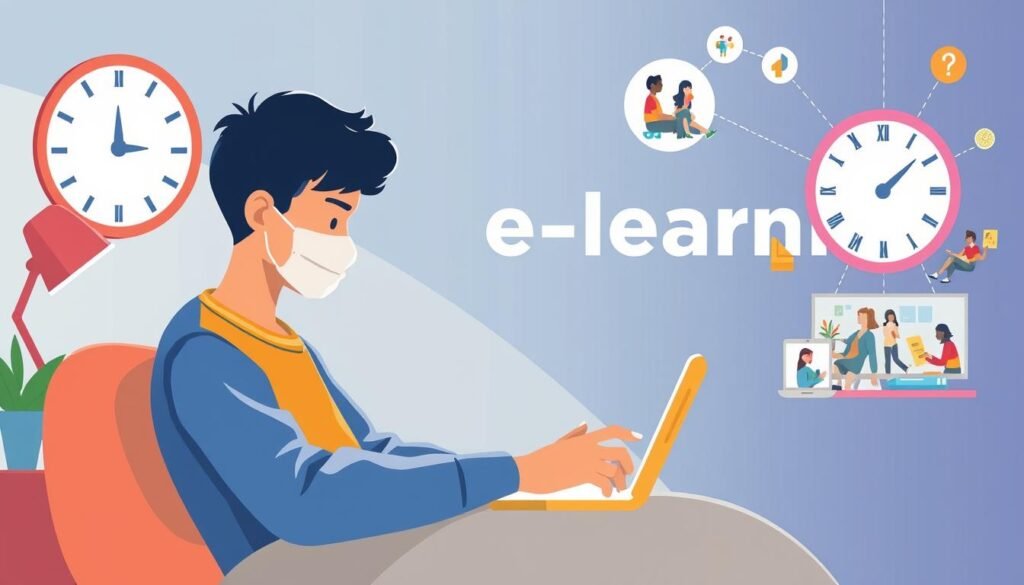
Key benefits of e-learning identified by students during the pandemic
Flexibility and Convenience
Students consistently identified flexibility as a major advantage of online learning during the pandemic:
Temporal Flexibility
- Self-paced learning opportunities
- Recorded lectures for review
- Flexible scheduling options
Spatial Flexibility
- Location-independent learning
- Elimination of commuting time
- Comfortable learning environments
Learning Pace Flexibility
- Personalized learning speeds
- Opportunity for deeper engagement
- Reduced performance pressure
Innovative Teaching Methods and Tools
The pandemic accelerated the adoption of innovative teaching methods and tools that enhanced learning experiences:
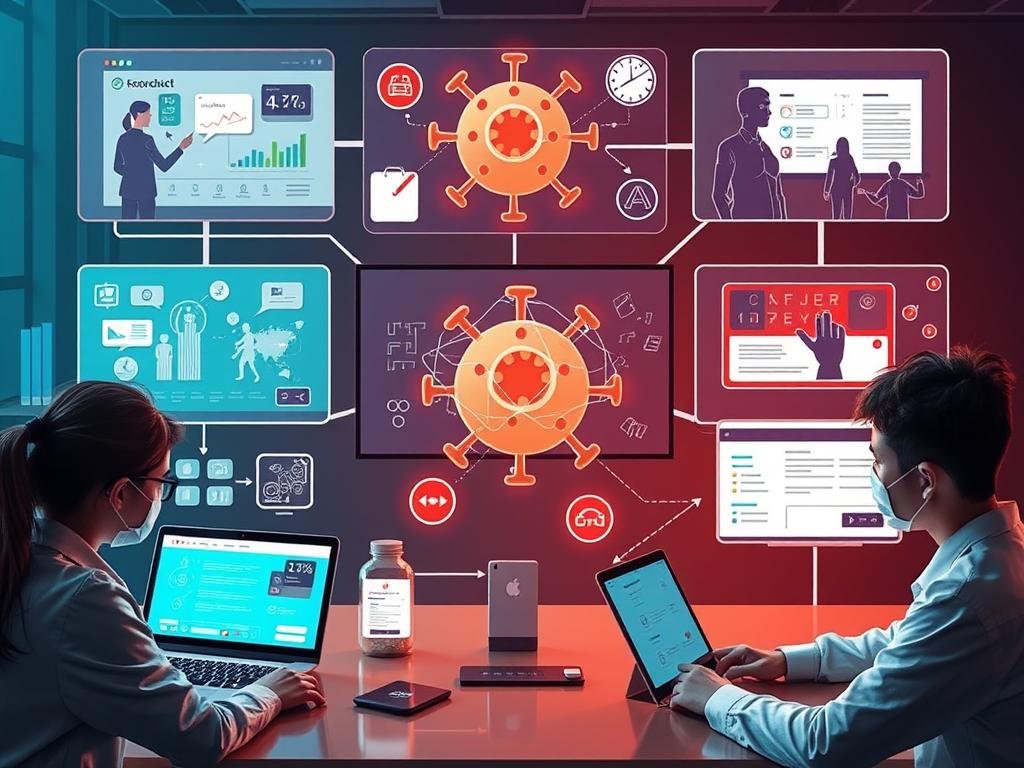
Innovative digital tools that enhanced online learning experiences
Research indicated that approximately 60% of students (by Week 9 of pandemic learning) found online discussion forums, Q&A sessions, and interactive platforms helpful for their learning—a significant increase from less than 30% in the early weeks of the transition. This suggests that as both students and faculty adapted to online platforms, the effectiveness of interactive learning tools increased substantially.
Development of Digital Competencies
The pandemic-driven shift to e-learning accelerated the development of valuable digital competencies among both students and educators:
These digital competencies represent valuable transferable skills that will benefit students in their future academic and professional endeavors, constituting an unexpected positive outcome of the pandemic-driven shift to online learning.
Factors Influencing E-Learning Effectiveness During the Pandemic
Research identified several key factors that significantly influenced the effectiveness of online learning during the pandemic period:
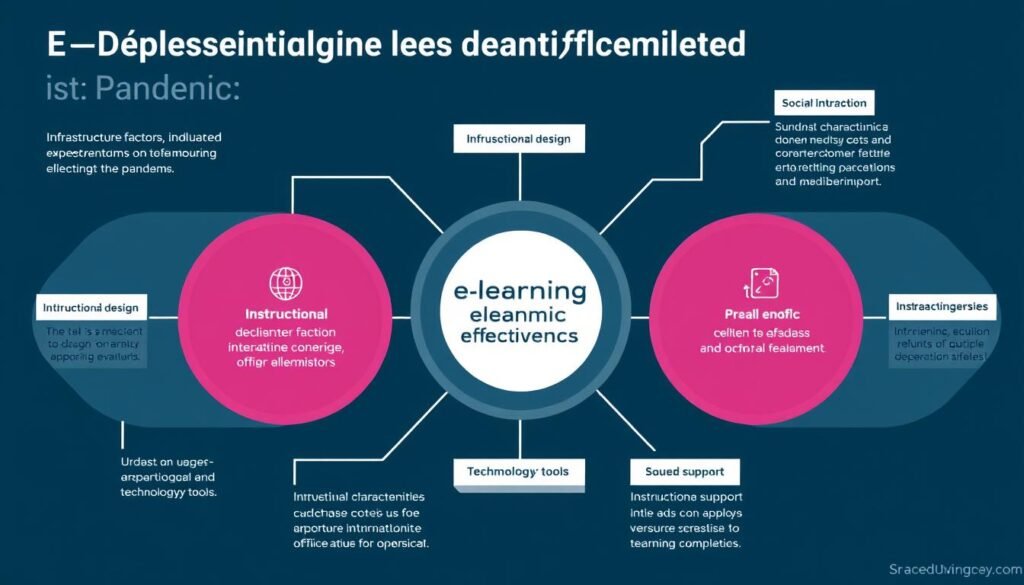
Key factors influencing the effectiveness of online learning during the pandemic
Infrastructure and Technology Access
Infrastructure emerged as the most critical determinant of e-learning effectiveness during the pandemic:
Research consistently found that students in regions with robust technological infrastructure reported significantly higher satisfaction and better learning outcomes with online education. Studies from developing countries highlighted how infrastructure limitations created substantial barriers to effective e-learning implementation.
Key infrastructure factors included internet connectivity quality, availability of appropriate devices, platform stability, and technical support resources. Research indicated that these factors created significant disparities in e-learning effectiveness between different regions, institutions, and socioeconomic groups.
Instructional Design and Delivery
The quality of instructional design and delivery significantly impacted online learning effectiveness:
Effective Instructional Elements
- Clear course structure and organization
- Interactive and engaging content
- Appropriate assessment methods
- Regular and constructive feedback
- Multimedia learning resources
Instructor Characteristics
- Technical proficiency with online platforms
- Responsiveness to student needs
- Ability to create engaging online presence
- Adaptability to digital teaching methods
- Effective online communication skills
Research by Sharma et al. (2020) found that instructor characteristics and course design quality were strongly correlated with student satisfaction and perceived learning effectiveness in online environments during the pandemic.
Student Characteristics and Self-Regulation
Individual student characteristics significantly influenced online learning effectiveness:
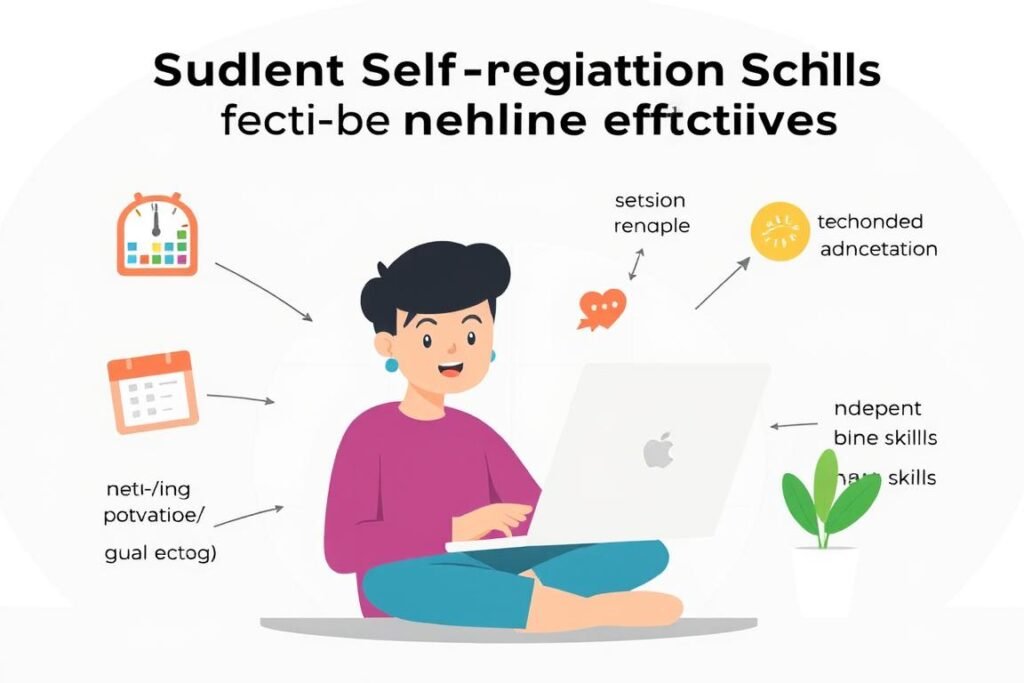
Self-regulation skills that enhanced online learning effectiveness
Research by Hong et al. (2021) found that students with stronger self-regulated learning abilities reported significantly higher satisfaction and better outcomes with online learning during the pandemic. These students were better able to manage their time, maintain motivation, and adapt to the increased autonomy of the online learning environment.
Comparative Effectiveness: Online vs. Traditional Learning
A critical question in the research was how online learning during the pandemic compared to traditional in-person education:

Comparative analysis of online and traditional learning approaches
Research Findings on Comparative Effectiveness
Studies comparing online and traditional learning during the pandemic produced mixed results:
| Research Approach | Findings | Limitations |
| Cross-sectional comparison studies | All 7 studies reviewed reported online learning as less effective than traditional learning | Subjective perceptions influenced by pandemic context; comparison to pre-pandemic memories |
| Longitudinal comparison studies | Both studies reviewed reported online learning as more effective than traditional learning | Different course content between periods; potential examination integrity issues |
| Randomized controlled trials | Both studies reported online learning as more effective than traditional learning | Limited sample size; potential influence of health/safety concerns |
| Self-reported effectiveness studies | Mixed results: 6 studies reported ineffective, 5 reported effective, 3 neutral | Subjective assessment; varied measurement instruments |
Subject-Specific Variations in Effectiveness
Research indicated significant variations in online learning effectiveness across different academic disciplines:
More Effective Online
- Theoretical subjects
- Text-based disciplines
- Computer science
- Business studies
- Social sciences
Mixed Effectiveness
- Mathematics
- Language learning
- Psychology
- Education
- Economics
Less Effective Online
- Laboratory sciences
- Medical clinical skills
- Performing arts
- Physical education
- Engineering practicals
These variations highlight the importance of considering disciplinary context when evaluating the effectiveness of online learning and designing appropriate e-learning strategies.
Student Preferences for Future Learning Models
Research examined student preferences for learning models after the resumption of in-person education:
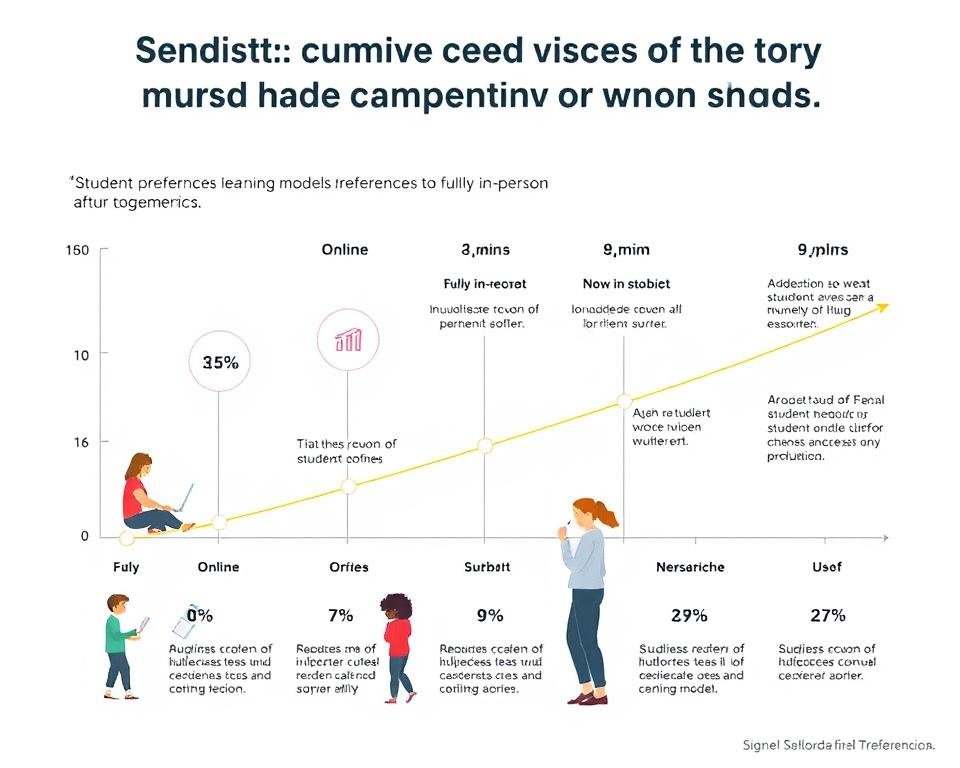
Student preferences for post-pandemic learning models
Studies found that approximately 60-70% of students preferred some form of hybrid learning model after experiencing online education during the pandemic. This represents a significant shift from pre-pandemic preferences, indicating that despite challenges, many students recognized value in certain aspects of online learning.
Preferred Elements of Online Learning
Students identified specific elements of online learning they wished to retain in future educational models:
What aspects of recorded lectures did students value most?
Students particularly valued the ability to review complex content at their own pace, access lectures at convenient times, and revisit material during exam preparation. The flexibility to pause, rewind, and rewatch difficult concepts was frequently cited as enhancing understanding and retention.
How did students benefit from online discussion forums?
Online forums provided opportunities for thoughtful participation from students who might be reluctant to speak in traditional classrooms. Students appreciated the extended time for reflection before responding and the ability to engage in discussions asynchronously. Research showed that by Week 9 of pandemic learning, nearly 60% of students found these forums valuable for learning.
What digital assessment methods did students prefer?
Students showed preferences for diverse assessment methods including in-video quizzes, peer review activities, and project-based assessments. These methods were perceived as more authentic and less stressful than traditional examinations, though concerns about academic integrity remained a consideration.
Ideal Balance Between Online and In-Person Learning
Research examined student and faculty perspectives on the ideal balance between online and in-person learning components:
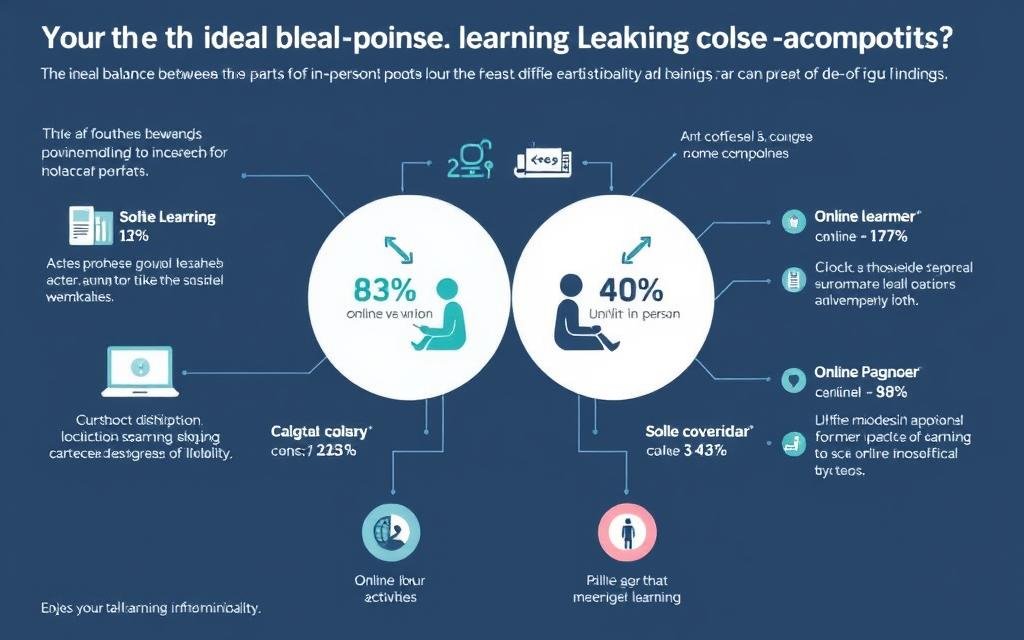
Research findings on optimal balance between online and in-person components
Interestingly, faculty members reported that approximately 75% believed at least 50% of course content could be effectively mastered by students through self-directed online learning. This perspective aligns with student preferences for hybrid models that combine the flexibility of online learning with the engagement and interaction of in-person education.
Evidence-Based Recommendations for Effective E-Learning Implementation
Based on the research findings, several evidence-based recommendations emerge for enhancing e-learning effectiveness:
Infrastructure and Access Recommendations
Institutional Level
- Invest in robust and reliable learning management systems
- Provide technical support resources for students and faculty
- Develop device loan programs for students with limited access
- Create contingency plans for technical disruptions
- Establish dedicated spaces for students lacking adequate home environments
Policy Level
- Increase funding for educational technology infrastructure
- Develop partnerships with telecommunications providers
- Address digital divide through targeted interventions
- Create standards for e-learning platform accessibility
- Support international collaboration for developing regions
Pedagogical Recommendations

Pedagogical best practices for effective online learning
Course Design
- Create clear, consistent course structure
- Chunk content into manageable segments
- Incorporate multimedia learning resources
- Design for accessibility and inclusion
- Balance synchronous and asynchronous activities
Engagement Strategies
- Implement regular interactive activities
- Utilize discussion forums effectively
- Incorporate collaborative learning opportunities
- Provide timely and constructive feedback
- Use formative assessment techniques
Faculty Development
- Provide comprehensive technical training
- Develop online teaching competencies
- Share best practices and success stories
- Create communities of practice
- Recognize and reward innovation
Student Support Recommendations
Research highlighted the importance of comprehensive student support systems for effective online learning:
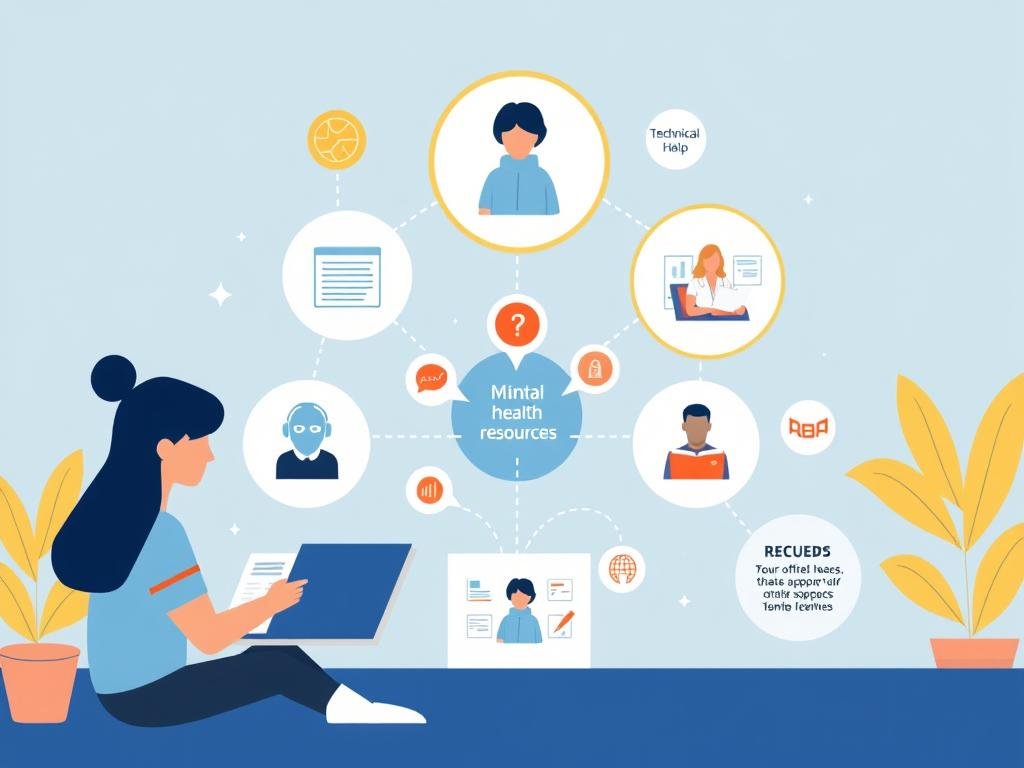
Comprehensive student support systems for effective online learning
- Virtual tutoring services
- Online writing centers
- Digital library resources
- Academic advising via video conferencing
- Supplemental instruction sessions
Academic Support
- 24/7 IT help desk services
- Platform-specific tutorials
- Technology training workshops
- Troubleshooting guides
- Peer technology mentors
Technical Support
- Virtual counseling services
- Online wellness resources
- Stress management workshops
- Virtual community-building activities
- Work-life balance guidance
Wellbeing Support
Future Implications: E-Learning in Post-Pandemic Education
The pandemic experience has significant implications for the future of education:

Envisioning the future of education post-pandemic
Emergence of Hybrid Learning Models
Research suggests that hybrid learning models will become increasingly prevalent in post-pandemic education:
“The pandemic has accelerated a transformation that was already underway in higher education. The future is not about choosing between online or in-person learning, but rather about thoughtfully integrating the best elements of both approaches to create more effective, flexible, and resilient educational models.”
Studies indicate that approximately 60% of faculty and 70% of students prefer some form of hybrid learning after experiencing fully online education during the pandemic. This represents a significant shift in educational preferences that will likely shape institutional strategies moving forward.
Technological Innovations and Integration
The pandemic period accelerated technological innovation in education, with several emerging trends likely to continue:
Learning Analytics
Increased use of data to understand student engagement patterns, identify at-risk learners, and personalize educational experiences based on individual needs and behaviors.
Immersive Technologies
Growing integration of virtual and augmented reality for practical skills development, especially in fields where hands-on experience is essential but difficult to provide remotely.
AI-Enhanced Learning
Expansion of artificial intelligence applications for adaptive learning paths, automated feedback, and intelligent tutoring systems that respond to individual student needs.
Institutional Preparedness and Contingency Planning
The pandemic experience highlighted the importance of institutional preparedness for educational disruptions:
Research suggests that institutions that had previously invested in e-learning infrastructure and faculty development adapted more successfully to pandemic-driven online learning. Future educational resilience will depend on maintaining contingency plans and flexible learning capabilities.
Moving forward, educational institutions will need to maintain robust contingency plans for emergency transitions to online learning, ensuring they can respond effectively to future disruptions while maintaining educational quality and accessibility.
Conclusion: Lessons Learned and Path Forward
The research on e-learning effectiveness during the pandemic reveals a complex picture with important lessons for the future of education:
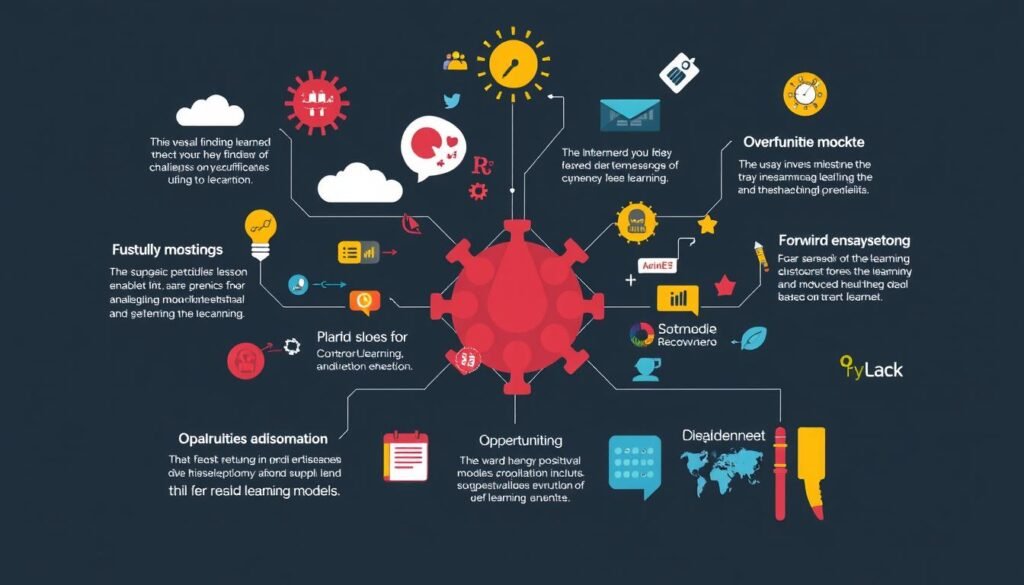
Key lessons from pandemic e-learning experiences
While research findings on the comparative effectiveness of online versus traditional learning remain mixed, several clear conclusions emerge:
- Infrastructure and access factors create significant disparities in e-learning effectiveness, highlighting the need for targeted investments to address the digital divide.
- Instructional design and delivery quality substantially impact online learning outcomes, emphasizing the importance of faculty development and pedagogical innovation.
- Student characteristics, particularly self-regulation skills, significantly influence online learning success, suggesting the need for enhanced support systems.
- Hybrid learning models that combine the flexibility of online learning with the engagement of in-person education are preferred by the majority of students and faculty.
- Subject-specific variations in online learning effectiveness necessitate tailored approaches rather than one-size-fits-all solutions.
The pandemic-driven shift to online learning has permanently altered the educational landscape, accelerating digital transformation and revealing both the potential and limitations of e-learning. Moving forward, the most effective educational approaches will likely be those that thoughtfully integrate online and in-person elements, leverage technological innovations, address equity concerns, and prioritize student engagement and support.
Implement Evidence-Based Blended Learning Strategies
Ready to enhance your institution’s approach to online and blended learning? Apply the research-based insights from this article to develop more effective, engaging, and equitable educational experiences for your students.

